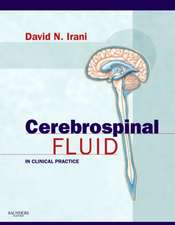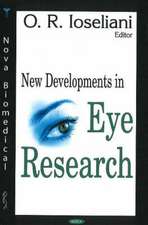Melatonin, Neuroprotective Agents and Antidepressant Therapy
Editat de Francisco López-Muñoz, Venkataramanujam Srinivasan, Domenico de Berardis, Cecilio Álamo, Takahiro A. Katoen Limba Engleză Hardback – 30 noi 2016
| Toate formatele și edițiile | Preț | Express |
|---|---|---|
| Paperback (1) | 1533.01 lei 38-44 zile | |
| Springer India – 19 iul 2018 | 1533.01 lei 38-44 zile | |
| Hardback (1) | 1593.39 lei 38-44 zile | |
| Springer India – 30 noi 2016 | 1593.39 lei 38-44 zile |
Preț: 1593.39 lei
Preț vechi: 1677.25 lei
-5% Nou
Puncte Express: 2390
Preț estimativ în valută:
304.94€ • 317.18$ • 251.74£
304.94€ • 317.18$ • 251.74£
Carte tipărită la comandă
Livrare economică 09-15 aprilie
Preluare comenzi: 021 569.72.76
Specificații
ISBN-13: 9788132228011
ISBN-10: 8132228014
Pagini: 1068
Ilustrații: XXV, 921 p. 178 illus., 113 illus. in color.
Dimensiuni: 178 x 254 x 53 mm
Greutate: 2.4 kg
Ediția:1st ed. 2016
Editura: Springer India
Colecția Springer
Locul publicării:New Delhi, India
ISBN-10: 8132228014
Pagini: 1068
Ilustrații: XXV, 921 p. 178 illus., 113 illus. in color.
Dimensiuni: 178 x 254 x 53 mm
Greutate: 2.4 kg
Ediția:1st ed. 2016
Editura: Springer India
Colecția Springer
Locul publicării:New Delhi, India
Cuprins
History of pineal gland as neuroendocrine organ and discovery of melatonin.- Bibliometric study of scientific research on melatonin during the last 25 years.- Neuroimaging of the pineal gland. Focus on Primary Insomnia.- Melatonin: Basic and clinical aspects.- Melatonin and melatonin receptors in neuroprotection.- Melatonin supplementation in neurodegenerative diseases: Current status.- Therapeutic potential of melatonin in combination with other drugs against neurodegeneration.- Melatonin, a neuroprotective agent: relevance for stress induced neuropsychiatric disorders.- Melatonin, sleep,circadian rhythm and mood disorders.- Melatonin induces antidepressant-likebehavior by promotion of hippocampal neurogenesis.- Association betweenmelatonin and neuroimmune diseases.- Melatonin in clinical states of patientswith fibromyalgia syndrome.- Melatonin’s beneficial effects in hepaticinjury.- Melatonin as a novel therapeutic agent against chemical warfareagents.- New galenic formulations of melatonin.- Melatonergic drug ramelteon in neurotherapeutics.- Melatonergic antidepressant agomelatine and its efficacy in depressive disorders.- Agomelatine, melatonin anddepression.- Neuropsychological models of depression.- Chronobiology of mooddisorders.- Bipolar disorders and biological rhythm.- Circadian clock genes and mood disorders.- Understanding the biologically adaptive side of mood disorders: a focus on affective temperaments.- Sleep abnormalities as diagnostic tool for major depressive disorder.- Depression: Correlations with thyroid hormones in major depressive disorder.- History of the discovery of antidepressant drugs.- Neurocognitive deficit in bipolar disorders.- Combination strategies in treatment-resistant depression.- Antidepressant drugs in elderly.- Antidepressant efficacy of escitalopram in major depressive disorder.- Antidepressant medications and suicide risk: What was the impact of FDA warning?.- Neurobiology and pharmacological prevention of suicide in mood disorders.- Antidepressants and anticonvulsants as adjuvant analgesics in chronic pain.- Genetic polymorphisms of cytochrome P450 enzymes and antidepressants.- Pharmacogenomics of antidepressant drugs.- Antidepressants modulate microglia beyond the neurotransmitters doctrine of mood disorders.- Brain-derived neurotrophic factor (BDNF) - TrkB signaling in depression: Biomarker and novel therapeutic target.- Targeting opioid receptors for innovative antidepressant therapies: rediscovering the opioid cure.- Prolactin and somatostatin responses to antidepressant therapy.- The role of vasopressin in anxiety and depression.- Ketamine: the glutamatergic antidepressant and itsefficacy.- Acetylcholinergic nicotinic receptors as pharmacological targets for cognitive enhancement: emerging evidence from psychosis populations.-The glutamate mGluR5 receptor as a pharmacological target to enhance cognitive function: emerging evidence from psychosis models.- Corticotropin-releasing factor receptors as a potential target in the developments of antidepressant drugs.- Nitric oxide signaling in depression and antidepressant action.- The role of arrestins in the neuroprotective aspects of antidepressant drugs.- Antidepressant drugs and phosphodiesterases.- Effect of methylphenidate and atomoxetine on development of the brain.- S-Adenosyl-L-methionine for major depressive disorder.- The role of antiepileptic drugs in bipolar depression.- Melatonin and other neuroprotective agents target molecular mechanisms of disease in amyotrophic lateral sclerosis
Notă biografică
Prof.Venkataramanujan Srinivasan,Msc, Ph.D MAMS SRI SATHYA SAI MEDICAL EDUCATIONAL AND RESEARCH FOUNDATION An International Medical Sciences Research Study Center“PrasanthiNilayam”, KOVAI, Coimbatore, Tamilnadu, INDIA
Textul de pe ultima copertă
This work is a guidebook for clinicians who are involved in treating depressive patients and also serves the research scientists who are working on the psychopharmacological mechanisms of antidepressant actions and psychopathological mechanisms underlying mood disorders. Mood disorders such as major depressive disorder (MDD), bipolar disorder (BPD) and seasonal affective disorder (SAD) are the most disabling disorders that are among the most expensive of all medical illnesses. The pathophysiology of mood disorders is very complex and involves many mechanisms like circadian rhythm disruption, sleep abnormalities, melatonin rhythm abnormalities and alterations in melatonin receptor mechanisms, abnormalities in monoaminergic neurotransmitter mechanisms, glutamatergic release mechanisms, hippocampal neurogenesis, and abnormal immune and cytokine release mechanisms. Many antidepressants that are in clinical use today including the recently introduced novel agents like agomelatine or other antidepressants cause clinical remission by resynchronizing disrupted circadian rhythms and melatonin receptor functions, enhancing monoaminergic neurotransmission, promoting hippocampal neurogenesis, and regulating immune mechanisms. This book explains various etiological factors that are involved in the pathogenesis of mood disorders and the mechanisms of therapeutic actions of antidepressants including the recently introduced agomelatine and other antidepressants that exhibit rapid onset of action with greater efficacy and fewer side effects.
Caracteristici
Detailed information on etiology of mood disorders
Provides recent thoughts on melatonin, its receptors and their role in circadian rhythms, and sleep and mood disorders
Describes therapeutic actions of antidepressants
Includes melatonergic agonists, their use in insomnia, psychiatric and neurological disorders
Provides recent thoughts on melatonin, its receptors and their role in circadian rhythms, and sleep and mood disorders
Describes therapeutic actions of antidepressants
Includes melatonergic agonists, their use in insomnia, psychiatric and neurological disorders

















